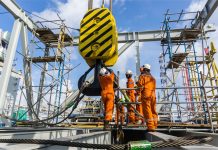Efficiency, punctuality, and effective management are essential for success in the construction industry. Delays can result in increased costs, strained client relationships, and a negative impact on a company’s reputation. To keep construction projects on schedule and maximize efficiency, it is crucial to employ comprehensive strategies. This article will discuss how you can create a well-organized and productive construction site.
Table of Contents
Comprehensive Planning and Project Management
Begin with an extensive construction schedule that divides the entire project into phases, assigning deadlines for each step. Utilize project management software to track progress, allocate resources, and keep stakeholders informed. Appoint an experienced project manager to oversee the project and ensure that everyone is working towards the same objectives.
Regular Communication and Coordination
Establish a communication plan that involves routine meetings with all team members, including subcontractors, to discuss progress, address concerns, and make necessary schedule adjustments. Promote open communication and develop transparent channels for sharing information and updates. From Cement Pig Rentals to portable cement storage pigs, ensure constant communication with the provider.
Efficient Use of Resources and Labor
Monitor material and equipment usage, maintain an updated inventory, and plan for timely replenishments to avoid delays due to shortages. Allocate labor strategically by assigning tasks based on workers’ skills and availability, ensuring they have the necessary tools and equipment to complete their tasks efficiently. You should also do your research to select the right machinery for jobs, like using excavators for major demolition projects or utilizing post drivers with skid steers to break down thick concrete.
Select Qualified Subcontractors and Suppliers
Choose subcontractors and suppliers with proven track records of delivering quality work and materials on time. Vet their qualifications, ask for references, and ensure they have the necessary licenses and certifications. Communicate project expectations and timelines, and establish a collaborative working relationship.
Risk Assessment and Contingency Planning
Conduct a thorough risk assessment to identify potential risks and develop contingency plans to address them. Analyze factors such as weather, site conditions, and regulatory requirements that could cause delays. Create backup plans for scenarios like equipment breakdowns, labor shortages, or unexpected obstacles to minimize their impact on the schedule.
Implement Quality Control Measures and Training
Implement a quality control program that encompasses regular inspections, testing, and adherence to industry standards. Train workers on proper techniques and safety procedures, ensuring they understand the importance of quality and safety in maintaining the project schedule.
Monitor Progress and Adjust as Needed
Regularly review the project’s progress against the initial schedule, and if deviations occur, identify the causes and make necessary adjustments to get back on track. Keep stakeholders informed of any changes and ensure everyone is committed to meeting the updated deadlines.
Streamline Processes and Implement Technology
Embrace technology and automation to streamline processes and enhance efficiency. Utilize tools like Building Information Modeling (BIM) to improve collaboration, planning, and visualization. Implement project management software, construction apps, and time-tracking tools to optimize productivity and communication.
Encourage Teamwork and Collaboration
Foster a positive work environment that encourages teamwork and collaboration. Develop strong relationships with all team members and subcontractors, and empower them to take ownership of their tasks. A collaborative atmosphere can boost morale, optimize problem-solving, and contribute to timely project completion.
Evaluate and Learn from Past Projects
Conduct post-project evaluations to identify areas for improvement and lessons learned. Analyze previous projects to determine what worked well and what caused delays. Use this information to refine processes, enhance planning, and improve future projects’ efficiency and timeliness.
Prioritize Safety and Compliance
Ensure that all safety regulations and compliance standards are met to avoid any delays due to accidents, injuries, or regulatory issues. Implement a safety program, conduct regular safety meetings, and provide proper training to all workers.
Develop Strong Client Relationships
Maintain open lines of communication with clients and involve them in the decision-making process. Keep them informed of the project’s progress, address their concerns, and manage their expectations to maintain trust and ensure a successful partnership.
Establish Performance Metrics and Accountability
Set performance metrics to monitor the efficiency and productivity of the project. Hold team members and subcontractors accountable for their work, and address any performance issues promptly to avoid delays and maintain the project schedule.
Foster a Culture of Continuous Improvement
Encourage a culture of continuous improvement by soliciting feedback from team members and regularly reviewing project performance. Identify areas for improvement and implement changes to enhance efficiency, productivity, and overall project success.
Optimize Material and Waste Management
Implement efficient material management strategies, such as just-in-time delivery and centralized storage, to minimize delays due to material shortages. Employ waste management practices, such as recycling and proper disposal, to reduce the environmental impact and maintain a clean, organized construction site.








